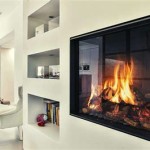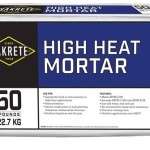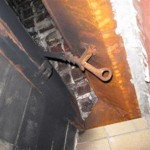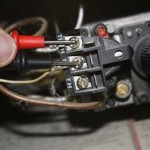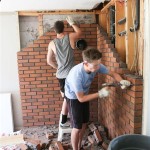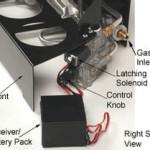Backyard Fireplace Plans: Designing Your Outdoor Oasis
A backyard fireplace serves as an attractive and functional addition to any outdoor living space. Beyond simply providing warmth on cool evenings, it creates a focal point for social gatherings, enhances the aesthetic appeal of a landscape, and potentially increases property value. Careful planning is critical, incorporating considerations from design and material selection to building codes and safety precautions. Numerous backyard fireplace plans exist, each offering unique advantages depending on individual preferences, budget, and available space.
The initial phase of planning involves determining the desired style. Options range from traditional brick fireplaces to contemporary concrete structures, and even rustic stone hearths. The chosen style should ideally complement the existing architectural design of the home and blend seamlessly with the surrounding landscape. Furthermore, the intended use of the fireplace plays a significant role in shaping the design. A fireplace primarily used for ambiance might require a shallower firebox than one designed for cooking or providing substantial heat.
Location is paramount. The fireplace should be situated away from flammable materials, such as trees, fences, and overhanging structures. Prevailing wind patterns should be considered to minimize smoke blowing towards the house or neighboring properties. Accessibility is also crucial; ensuring adequate space for seating and movement around the fireplace enhances its usability and encourages social interaction.
The construction of a backyard fireplace is not a simple do-it-yourself project for all homeowners. Proper knowledge of masonry, chimney construction, and local building codes is essential. Hiring a qualified contractor can ensure the fireplace is built safely, efficiently, and in compliance with all applicable regulations. However, for experienced individuals with the necessary skills and tools, a DIY approach can be a cost-effective option.
Key Considerations for Backyard Fireplace Design
Successfully planning and executing a backyard fireplace project hinges on several critical factors. Understanding these considerations beforehand can prevent costly mistakes and ensure the final product meets expectations in terms of both functionality and aesthetic appeal.
Material Selection: The materials used in constructing a backyard fireplace significantly influence its appearance, durability, and overall cost. Brick, stone, concrete, and stucco are among the most common choices, each offering distinct advantages and disadvantages. Brick, for example, provides a classic, timeless look and is relatively durable, but can be more expensive than concrete. Stone offers a natural, rustic aesthetic and excellent heat retention, but requires skilled craftsmanship for proper installation. Concrete is a versatile and cost-effective option, allowing for various finishes and designs, but may lack the visual appeal of brick or stone. The choice of material should be carefully considered based on budget, desired aesthetic, and required durability.
Selecting the right type of brick is also crucial. Firebrick, specifically designed to withstand high temperatures, is essential for lining the firebox. Common brick, while structurally sound, is not suitable for direct exposure to extreme heat and will eventually crack and crumble. Similarly, the type of mortar used is vital. High-temperature mortar, formulated to resist intense heat, is necessary for bonding the bricks or stones within the firebox and chimney. Standard mortar will deteriorate rapidly under high heat conditions, compromising the structural integrity of the fireplace.
Chimney Design and Construction: The chimney is a critical component of any fireplace, responsible for safely venting smoke and combustion gases away from the living space. A properly designed and constructed chimney is essential for efficient draft and preventing dangerous backdrafts. The height of the chimney should be sufficient to create adequate draft, typically extending at least two feet above the highest point of the roof within a ten-foot radius. The internal dimensions of the chimney flue should be appropriately sized for the firebox, ensuring efficient smoke removal. A flue that is too small can restrict airflow, leading to smoke spillage, while a flue that is too large can allow excessive heat loss, reducing the fireplace's efficiency.
Furthermore, the chimney should be capped with a spark arrestor to prevent embers from escaping and potentially igniting nearby vegetation. Regular cleaning and maintenance of the chimney are crucial for removing creosote buildup, a highly flammable substance that can accumulate over time and pose a significant fire hazard. A professional chimney sweep can inspect and clean the chimney annually, ensuring safe and efficient operation.
Building Codes and Permits: Before commencing any construction, it is essential to check local building codes and obtain the necessary permits. Building codes typically regulate the location of the fireplace relative to property lines, setbacks from structures, and chimney height requirements. Failure to comply with building codes can result in fines, delays, and even the forced removal of the fireplace. Obtaining the required permits ensures that the project meets all safety and structural standards, protecting both the homeowner and the surrounding community.
The permitting process usually involves submitting detailed plans and specifications to the local building department for review. A building inspector may visit the site during various stages of construction to ensure compliance with the approved plans and applicable codes. While navigating the permitting process can be time-consuming and potentially frustrating, it is a necessary step to ensure the safe and legal construction of the backyard fireplace.
Exploring Different Backyard Fireplace Styles
The aesthetic appeal of a backyard fireplace is a significant factor in its overall value and enjoyment. Numerous styles exist, ranging from the traditional to the contemporary, each offering a unique character and visual presence. Exploring these different styles can help homeowners identify the design that best complements their existing landscape and personal preferences.
Traditional Brick Fireplace: The traditional brick fireplace evokes a sense of timeless elegance and classic charm. Constructed with red or brown bricks, often arranged in intricate patterns, this style seamlessly integrates into a variety of architectural settings. The warmth and inviting texture of brick create a cozy and welcoming atmosphere, making it a popular choice for outdoor living spaces. Often, a traditional brick fireplace will incorporate a raised hearth, providing additional seating and visual interest. The firebox is typically lined with firebrick to withstand high temperatures, and the chimney is constructed with matching brick for a cohesive aesthetic. This style often incorporates a mantel, providing a space for decorative items or outdoor cooking utensils.
Contemporary Concrete Fireplace: The contemporary concrete fireplace embraces a minimalist and modern aesthetic. Characterized by clean lines, smooth surfaces, and a focus on understated elegance, this style complements contemporary homes and landscapes. Concrete is a versatile material that can be molded into various shapes and sizes, allowing for unique and customized designs. The neutral color palette of concrete provides a blank canvas that can be accented with other materials, such as stainless steel or glass. A contemporary concrete fireplace often features a linear firebox, creating a dramatic and visually appealing flame. This style can also incorporate built-in seating or storage, enhancing its functionality and integration into the outdoor living space.
Rustic Stone Fireplace: The rustic stone fireplace exudes a natural and organic charm, blending seamlessly with the surrounding landscape. Constructed with natural stones of varying shapes and sizes, this style evokes a sense of rugged authenticity and connection to nature. The irregular textures and earthy tones of the stone create a visually captivating and inviting atmosphere. A rustic stone fireplace often features a large, open firebox, perfect for burning logs and creating a roaring fire. The chimney is typically constructed with matching stone, often incorporating a rough-hewn texture for added visual interest. This style is particularly well-suited for homes located in wooded areas or landscapes with a natural, unrefined aesthetic.
Essential Safety Precautions for Backyard Fireplaces
While a backyard fireplace can enhance the enjoyment of outdoor living spaces, it is essential to prioritize safety. Taking appropriate precautions can minimize the risk of fire hazards and ensure the well-being of family and guests. Proper installation, maintenance, and operation are crucial for maintaining a safe and enjoyable outdoor fireplace experience.
Clearance from Flammable Materials: Maintaining adequate clearance between the fireplace and flammable materials is paramount. Trees, shrubs, fences, and overhanging structures should be located at a safe distance from the fireplace to prevent accidental ignition. A general rule of thumb is to maintain a clearance of at least ten feet in all directions. Regularly trimming vegetation around the fireplace can further reduce the risk of fire spreading. It is also important to ensure that outdoor furniture and other flammable items are kept away from the firebox.
Supervision and Fire Safety Equipment: The fireplace should never be left unattended while a fire is burning. Children and pets should be closely supervised to prevent them from getting too close to the flames. Keeping a fire extinguisher or a bucket of water nearby can provide a quick response in case of emergencies. A shovel and poker are also essential tools for managing the fire and safely extinguishing embers. Educating all family members and guests about fire safety procedures can further enhance safety and preparedness.
Proper Fuel Usage and Disposal of Ashes: Only use seasoned firewood in the fireplace. Green or wet wood produces excessive smoke and can contribute to creosote buildup in the chimney. Never use flammable liquids, such as gasoline or kerosene, to start or accelerate the fire. Dispose of ashes properly in a metal container with a tight-fitting lid. Allow the ashes to cool completely before disposing of them, as hot embers can remain for several days. Never dispose of ashes in a cardboard box or plastic container, as this can create a fire hazard.

Outdoor Fireplace Design Ideas Getting Cozy With 10 Designs Unilock

How To Build An Outdoor Fireplace Lovetoknow Plans Diy Backyard

Your Diy Outdoor Fireplace Headquarters Plans And Kits By Backyard Flare Llc Tucson Arizona

53 Most Amazing Outdoor Fireplace Designs Ever

Saguaro Diy Outdoor Fireplace Plan

Fireplace Plans

Easy Affordable Outdoor Fireplace Design Plans Cad Pro

30 Outdoor Fireplace Ideas Cozy Fireplaces

53 Most Amazing Outdoor Fireplace Designs Ever Backyard Patio

Pima Diy Outdoor Fireplace Plan

